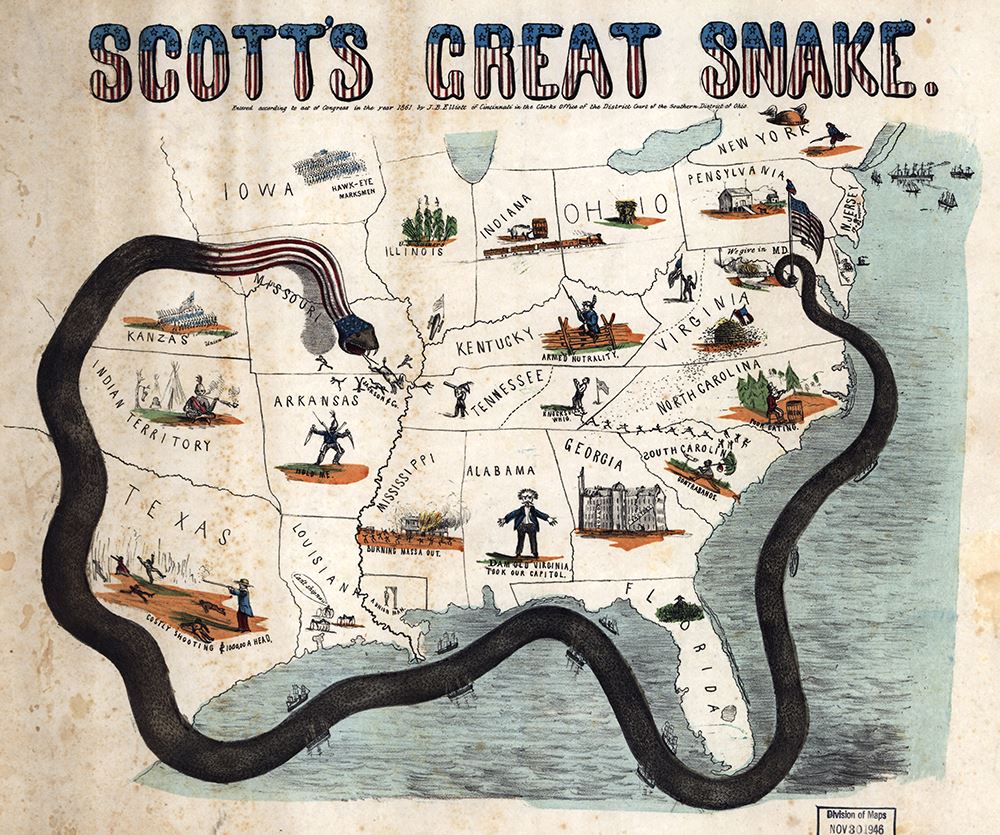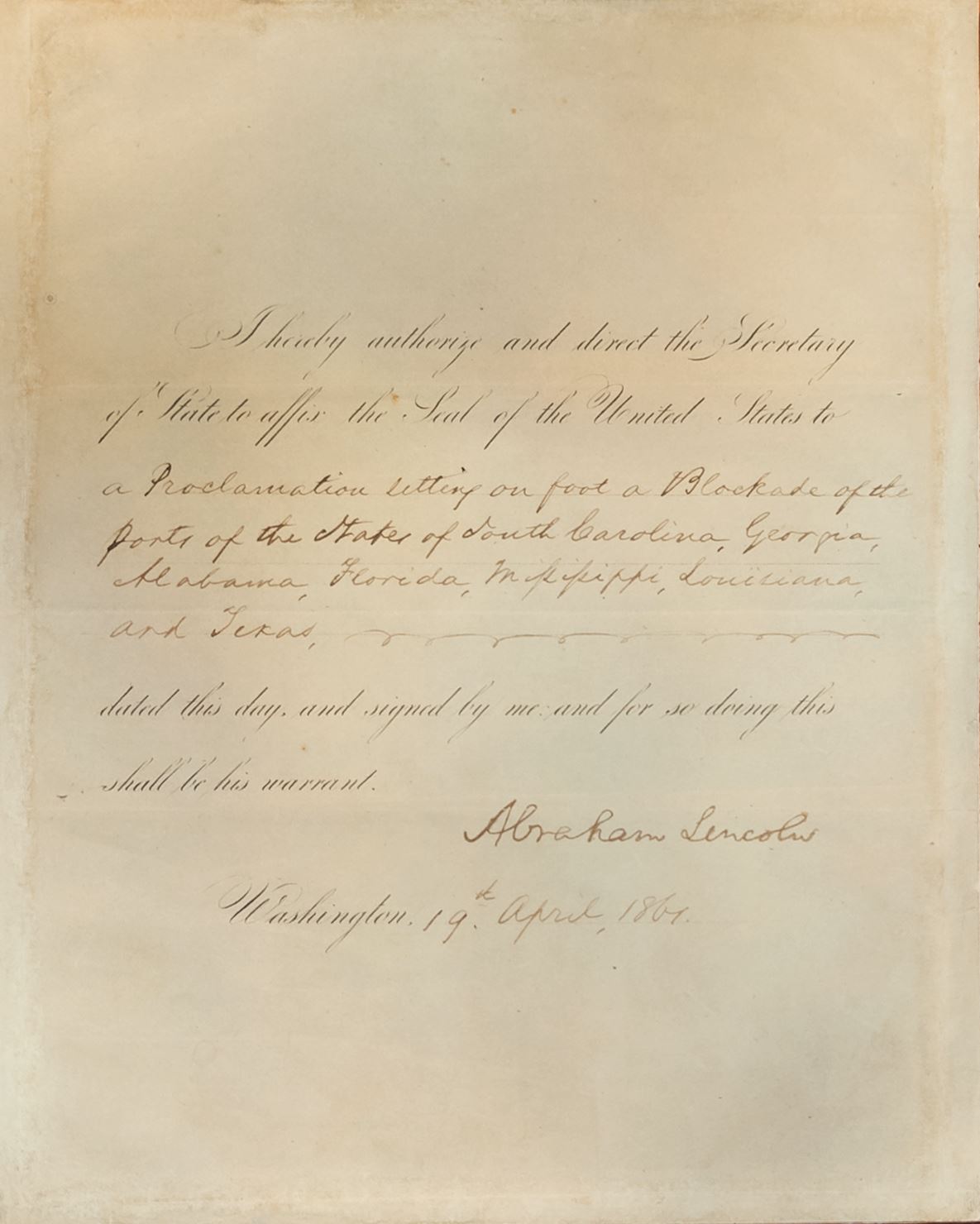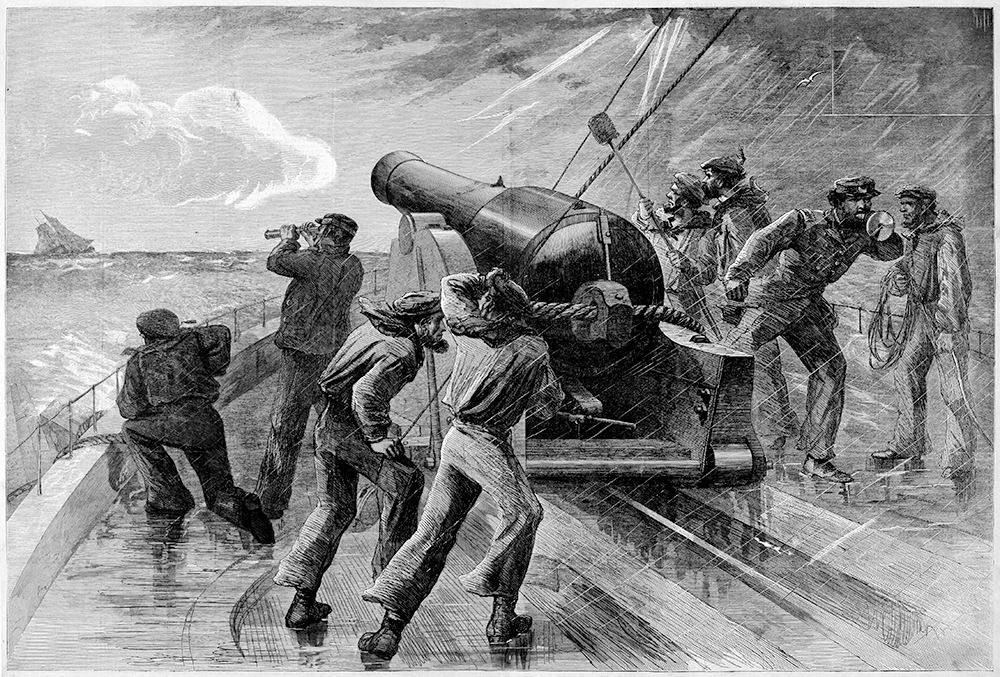By Christian McWhirter
In a presidency rife with consequence, Abraham Lincoln’s second month in office may well have been his most critical. The secession crisis had started with his election six months earlier. Proslavery advocates in Southern states believed Lincoln and his new Republican Party were abolitionists and immediately started debating the merits of leaving the Union to form a new nation guaranteeing the right of enslaving African Americans. South Carolina was the first to secede on December 20, but by the time Lincoln took office the entire Deep South had joined it and declared themselves the Confederate States of America.
Realizing himself at the center of this whirlwind, Lincoln remained mostly silent on the crisis until his inauguration on March 4, 1861. That day, he delivered an extended, eloquent argument against the constitutionality of secession and the wisdom of breaking up the United States. He closed with his now famous appeal to Americans’ shared national identity — their “bonds of affection” — and shared Revolutionary inheritance — “The mystic chords of memory, stretching from every battle-field, and patriot grave.”
Yet his eloquence went unheeded, and the secessionists persisted. The crisis that had been building over a broad vista for months, now focused on a single geographic spot — Charleston Harbor. Fort Sumter, the last federal facility in South Carolina, sat in a precarious position. The U. S. commanding officer Robert Anderson — a Kentuckian and former West Point instructor, who had taught the opposing general, P.G.T. Beauregard — had refused to surrender to the insurgents since the state’s secession. By Lincoln’s inauguration, however, a ticking clock had started. With the city controlled by the Confederates, Anderson had been unable to secure supplies, which were now running low. Secession had already sparked the greatest constitutional crisis in the nation’s history, but Lincoln now faced a possible devolution from a political debate to outright war.
 Confederate forces attack Fort Sumter (Wikimedia Commons)
Confederate forces attack Fort Sumter (Wikimedia Commons)
We all know Lincoln chose to resupply the fort and Beauregard reacted by opening fire on April 12, 1861, thus beginning the Civil War. Yet it was not that decision alone that made April 1861 the most critical month of Lincoln’s presidency. The actions he took in the wake of the Sumter bombardment established the contours of the war to come, and a new document generously donated to the Abraham Lincoln Presidential Library and Museum by Governor and First Lady Pritzker sheds light on that process.
Although Lincoln abhorred the idea of civil war, he understood the potential for one when he assumed office and had a plan in place for putting down a Southern Rebellion. Seeking advice from General Winfield Scott—the legendary victor of the Mexican-American War and commander of all U. S. forces—he adopted the “Anaconda Plan.” Put simply, it would strangle the seceded states like a great snake by cutting off trade through a coastal blockade and seizing control of the Mississippi River. A large force of U. S. troops would then penetrate and occupy the economically weakened Confederacy.
 The “Anaconda Plan” was championed by Gen. Winfield Scott.
The “Anaconda Plan” was championed by Gen. Winfield Scott.
With the Confederates having attacked Sumter and thereby transformed the secession crisis into an armed rebellion, Lincoln could use his executive power as president — with Congress out of session — to enact the Anaconda Plan. This took the form of two proclamations. The first came on April 15, with a call for 75,000 volunteer soldiers “to maintain the honor, the integrity, and the existence of our National Union.” That force, along with the 16,000 officers and men already enlisted in the “regular army,” provided the foundation for the “Union Army” — numbering about a million Black and white soldiers by the end of 1865.
Four days later — as Confederate-sympathizers in Baltimore were rioting against Federal soldiers heading to the capitol — Lincoln issued his second proclamation, which declared a blockade of rebelling states. The library’s new document catches Lincoln in the moment of making that decision, as he authorizes Secretary of State William Seward to affix the presidential seal to the proclamation.
 Lincoln’s instructions to finalize the order for a blockade of Southern ports. The document is a gift from Gov. JB Pritzker and First Lady MK Pritzker.
Lincoln’s instructions to finalize the order for a blockade of Southern ports. The document is a gift from Gov. JB Pritzker and First Lady MK Pritzker.
However, the blockade was not without controversy. Lincoln believed the Constitution denied the right of secession and therefore did not recognize the Confederacy as an independent nation. Indeed, that was the entire justification for his military actions against the South. This put him in a thorny situation regarding the blockade. Not only was Lincoln blocking foreign powers from trading with part of his own country, the U.S. Navy was also not large enough in 1861 to fully blockade the Confederacy. This initial effort was therefore a “paper blockade” — one not fully enforced by actual ships. Nineteenth-century foreign affairs were a tangle of official and unofficial rules, so Lincoln was treading on dangerous ground. Nevertheless, he successfully navigated the storm, and the blockade grew over time to become a key component of Confederate defeat.
The blockade has another (again complicated) legacy. With normal relations broken between loyal and rebel states during the Civil War, the postwar courts found themselves busy with numerous cases debating if the conflict interrupted the Statue of Limitations. This reached the Supreme Court in 1870, putting the justices in the awkward position of having to choose a start date for a war that — according to their own government — was not actually a war. They chose the April 19 blockade declaration as that date, at least as it regarded the normal flow of commerce between the states. Yet the awkwardness and imperfect nature of the decision is evident in their own admission that they had to make this ruling “in the absence of more certain criteria of equally general application.”
Regardless of the blockade’s complicated legacy, it remained one of the two pillars of the federal war effort for the entire conflict. Aspects of the overall strategy changed, particularly in regard to slavery, but the bones of the Anaconda Plan stayed in place, and a compelling piece of its creation now resides in the Abraham Lincoln Presidential Library and Museum.
 A Harper’s Weekly illustration of the U.S. Navy chasing a ship trying to violate the blockade.
A Harper’s Weekly illustration of the U.S. Navy chasing a ship trying to violate the blockade.
Lincoln’s “Order to Affix the Seal of the United States to a Proclamation of a Blockade” is currently on-display in the museum’s Treasures Gallery.
Dr. Christian McWhirter is the Lincoln Historian at the Abraham Lincoln Presidential Library and Museum.